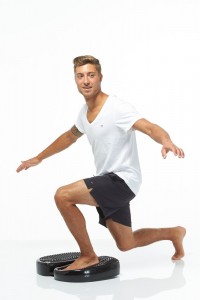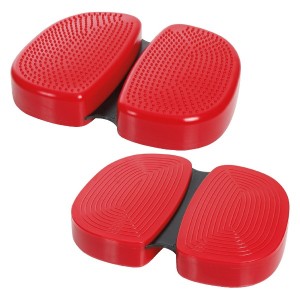Movement learning and movement relearning are difficult challenges every trainer faces with his charges on any given day. The conscious inclusion and improvement of sensorimotor skills will optimise the foundations for movement learning, and will facilitate reaching set targets for desired training adaptations.
Sensorimotor function is the basis for every training stimulus. The better the subject’s sensorimotor skills, the more precise each movement can be performed.
The impact will always be mutual: sensorimotor function and coordination are improved by movement learning, while the basic ability to control muscles and movements in the first place is built on sensorimotor training.
Creating sensorimotor impulses means improving coordinative capabilities. Improved information processing in the nervous system, i.e. an improvement of the system itself, the targeted control of individual muscle fibres and the interplay of individual muscles, will in turn improve the required movement performance, muscle response, speed, and the quality of movement.
Nervous and synaptic effects of change on the basis of sensorimotor training
Training, and specifically coordination training, allows a manipulation of the structure and function of the incredibly complex nervous system:
- Blood circulation in the brain is improved
- Dendrites are multiplied
- Synapse surface is increased
- Additional synaptic boutons are formed
- Lesser used synapses are incorporated (applied)
- Myelin sheaths improve
- Information processing and integration improves
- Deterioration due to non-use or ageing is slowed or reversed
Effects and benefits for the user
- Improved equilibrium
- Improved reactivity
- Improved speed
- Improved muscle strength
- Improved brain and memory fitness
- Improved surefootedness and agility
- Recommended for osteoarthritis sufferers
Aero-Step® Pro
As a result of the overwhelming success of Aero-Step® in physiotherapy, TOGU® decided to go one step further. AERO-Step® was increased in size, and the material was revised and adjusted to meet a whole new range of comprehensive and different training requirements.
In short: TOGU® developed the Aero-Step Pro specifically with training in mind.
Aero-Step® Pro allows any user of any age to easily create valuable sensorimotor stimuli, and thus achieve countless positive aspects of change.
An air-filled, dynamic base
We talk about an “unstable base” when a (stable) board can move in one or more directions (unstable). This concept has been known in physiotherapy for many years – and is represented by various balancing boards.
The terms “unstable” or “dynamic” refer to an air-filled base. The quicker the response of the base to a change in weight distribution, the faster the response needed from the nervous system of the user, i.e. the requirements are high, which means training effects will be quick.
The response of Aero-Step Pro – because it is filled with air – is very different from that of a training tool filled with soft material. Soft material, be it stacked mats or mats of varying thickness, are slow to respond – and sometimes you simply sink. That alone makes them inadequate for specific exercise types like abdominals, wrists, laterals, etc. Their softness is neither helpful nor a challenge; instead, it can be a hindrance (e.g. bending stress for abdominal exercises).
The quick response of air-filled training equipment is a great challenge on the one hand, and on the other a highly efficient tool to improve sensorimotor function during training.
The clear advantage of Aero-Step Pro is its versatility; virtually any exercise can be performed or based on it while standing, sitting, lying down, or kneeling. It can be used at any age: creating a “balancing route” for kids, as a training tool for amateur and professional athletes, to promote and improve physical balance and synaptic function for senior citizens in studio-based classes or at home – in short: virtually anyone can benefit from using the Aero-Step Pro.
A new and improved production process now allows using both sides of the Aero-Step Pro.
© Author: Karin Albrecht, TOGU








